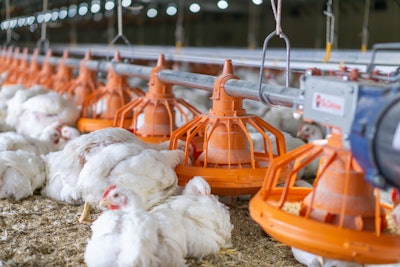
Scandi Standard is making good progress towards its long-term targets, according to managing director and CEO, Jonas Tunestål. Furthermore, he said, the group is demonstrating its realization of additional potential.
Commenting on publication of the group’s performance for the January-June period of 2024, Tunestål highlighted improvements in operating income and margins as well as increased chicken meat output in the second quarter. At 127 million Swedish krona (SKR; US$12.1 million), the group’s operating income (Earnings Before Interest and Taxes; EBIT) was 5% higher than for the same period of 2023, while EBIT margin increased to 3.8% from 3.5%. He attributed these developments to controlled volume growth, a better product mix, and more efficient production.
For the April-June quarter, the volume of chicken processed (expressed as grill weight) was 3% higher year-on-year at 69,000metric tons (mt). However, at SEK3.35 billion, net sales were down 2% (at constant exchange rates). Income for the three months was down by SEK3 million to SEK71 million.
Compared to the first half of last year, the volume of chicken processed by Scandi Standard was 5% higher in the January-June period of 2024 at 139,000mt. The group reports a 16% year-on-year improvement in EBIT to SEK248 million, and EBIT margin was increased by 0.6 percentage points to 3.8%. Income for the six months was 20% higher at SEK141 million, although net sales (at constant exchange rates) were down 3% at SEK6.51 billion.
Second-quarter performance by business sector
Scandi Standard’s operations fall into three broad categories: ready-to-cook (RTC), ready-to-eat (RTE), and other.
Generating the highest net sales in the April-June quarter for the company was RTC. It accounted for almost SEK2.55 billion of the group’s net sales — an increase of 2% year-on-year as a result of volume expansion. At SEK98 million, operating income for this segment was up significantly from the SEK48 million reported last year.
The group reports that work on its RTE operations is continuing. At SEK686 million in net sales and SEK38 million in operating income for the second quarter of this year, both figures were substantially lower than those reported in the comparable period of 2023. These changes were driven by lower capacity utilization of the plant in Farre, Denmark, as well as an insurance indemnity that impacted earnings last year.
For Scandi Standard, the “other” business category represents its efforts to use more of each chicken carcass as raw materials for uses. Revenue for the Ingredient part of this category was down to SEK118 million for the second quarter, and operating income amounted to just SEK5 million. These trends the company attributed mainly to the normalization of energy prices.
By geographical operation, the group’s home business in Sweden generated the highest second-quarter net sales at SEK891 million. It was closely followed by Denmark (SEK852 million), and then Ireland (SEK736 million), Norway (SEK578 million), and Finland (SEK293 million).
By sales channel, retail accounted for the majority of the group’s net sales — SEK2.11 billion of the quarterly total of SEK3.35 billion. Food service generated SEK574 million, exports SEK352 million, and industry/other the remaining SEK311 million.
Progress on sustainability
For the second quarter of this fiscal year, Scandi Standard reports some significant improvements in its vision “Better Chicken for a Better Life.”
Among the highlights is an 85% reduction in the proportion of its flocks receiving antibiotics. This amounted to just 1.6% of flocks treated during this period. Usage is negligible in Nordic countries, the company reports, so the improvement has mainly occurred in the Republic of Ireland. There, the focus has been on improving the quality of day-old chicks, and on their management in the first 48 hours.
By international standards, average foot pad scores by Scandi Standard have been “good” over the past three years at less than 15. For the latest quarter, the score has been 4.3 — a significant improvement from the comparable period. Again this was driven by changes in the Irish operations to feed formulations and bedding composition, according to the company.
Scandi Standard is reporting a 4% year-on-year reduction in carbon dioxide (CO2) emissions from its own operations at 75.7g CO2e per kilo of product for the April-June period. This improvement is attributed to updated CO2 figures from national grids, higher chicken production volumes, and the change to district heating from propane in Norway.
More on Scandi Standard
Based in Sweden, Scandi Standard also manufactures, markets, and sells a range of foods based on chicken also in other Nordic countries (Denmark, Finland, and Norway) and the Republic of Ireland. It is also has a table egg business in Norway.
With annual slaughterings of around 178 million birds, Scandi Standard is easily within the Top 20 largest poultry companies in Europe, according to WATTPoultry.com’s Top Poultry Companies survey.
For its last full financial year, the Group reported net sales of more than SEK13.04 billion, and adjusted EBIT of SKR457 million. These figures represented year-on-year increases of 4% and 57%, respectively.
Through its Finnish subsidiary Naapurin Maalaiskana, Scandi Standard entered into a binding agreement to acquire the assets of Landeli Oy in January of this year. The acquisition of the ready-to-eat meat and poultry processing business in Honkajoki was expected to develop Scandi Standard's operations in Finland.


















